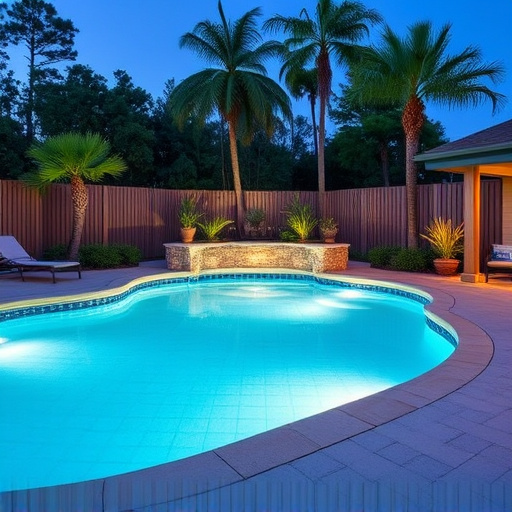Inground pools offer fun but carry risks, especially for unsupervised individuals and young children. Swimming pool alarms designed specifically for inground pools can significantly minimize these hazards by detecting surface movement and triggering alerts. These range from basic foam detectors to advanced systems with features like pressure mats, shock sensors, and remote monitoring via smart apps. Proper maintenance, including regular testing and battery replacement, is crucial for their effectiveness. Additional security measures like fencing and pool covers further enhance safety around inground pools.
Inground pools offer a refreshing retreat, but they also present unique safety challenges. Understanding and mitigating risks is paramount, especially with young children around. This article delves into the critical role of swimming pool alarms for inground pools, exploring different alarm types, installation best practices, and complementary safety measures. By implementing these strategies, you can enhance water safety and ensure a secure aquatic environment.
Understanding Inground Pool Risks: Why Alarms Are Essential
Inground pools offer a delightful retreat and endless hours of fun, but they also come with inherent risks that should never be overlooked. Unlike above-ground models, inground pools are flush with the ground, making them more difficult to spot and potentially more dangerous, especially for young children and unsupervised individuals. Drowning is a real concern, and every second counts in such situations. That’s where swimming pool alarms for inground pools play a pivotal role.
These life-saving devices are designed to detect movement at the water’s surface, triggering an alarm that alerts nearby swimmers and bystanders. They serve as a critical safety net, ensuring that everyone around the pool is alerted promptly in case of an emergency. With the right swimming pool alarms for inground pools installed, homeowners can enjoy their aquatic spaces with added peace of mind, knowing that potential hazards are minimized and lives could be saved.
Types of Swimming Pool Alarms for Inground Pools
Swimming pool alarms for inground pools come in various types, each designed to offer different levels of protection and convenience. One common type is the foam detector, which floats on the water’s surface and sends an alert when it detects movement or disruption. These are simple yet effective for basic monitoring. More advanced options include pressure-sensitive mats installed around the pool deck, detecting any weight or pressure anomalies. For enhanced safety, radio frequency (RF) or wireless alarms can be used, allowing for remote monitoring and automatic alerts to smartphones or security systems.
Additionally, some models incorporate shock sensors that trigger when there’s an unexpected impact, such as a fall into the pool. These alarms are particularly useful in areas with high foot traffic or near slides or diving boards. Modern technology also offers smart pool alarm systems that can be integrated into home automation networks, providing real-time alerts and remote control through dedicated apps. This level of sophistication adds convenience and peace of mind for pool owners, ensuring the safety of both children and adults around inground pools.
Installation and Maintenance: Ensuring Alarm Effectiveness
When installing a swimming pool alarm for an inground pool, proper placement is key to ensuring its effectiveness. These sensors should be strategically positioned around the pool’s perimeter, capturing any sudden movement or entry. A reliable alarm system will also include water-resistant components and robust wiring to withstand the elements and constant exposure to moisture. Regular maintenance is equally vital; testing alarms monthly and replacing batteries promptly are simple yet crucial steps to guarantee their readiness in case of an emergency.
Additionally, consider features like automated test cycles and dual sensors for enhanced accuracy. Inground pool alarms with these modern amenities not only offer greater peace of mind but also contribute to a safer swimming environment. By keeping up with maintenance and choosing the right alarm system from the outset, you can significantly reduce risks associated with unsupervised pools.
Additional Safety Measures: Beyond Alarms for Inground Pools
Beyond basic swimming pool alarms for inground pools, there are several additional safety measures that can significantly enhance security. One effective approach is implementing a robust fencing system around the pool area. This physical barrier acts as a crucial line of defense, preventing unauthorized access and curious children from entering unsupervised. Ensure the fence is secure, tall enough to deter climbing, and fitted with self-closing and locking gates to maintain control over who enters the pool zone.
Another advanced safety feature worth considering is a pool cover. Not only does it keep debris out of the water, but a motorized or automatic pool cover can serve as an extra layer of protection against accidental drowning. These covers can be quickly deployed, creating a secure barrier when the pool isn’t in use, and some even come equipped with alarm systems that alert you if someone falls into the water.
